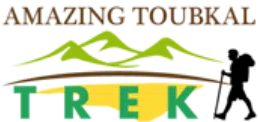- Home
- Toubkal
- Toubkal trek 2 days
- 2-day Atlas mountain trek
- 3-day Mount Toubkal climb
- 3-day Imlil Ourika valley trek
- 3-day Berber villages trek
- 4-day Berber village life experience
- 4-day Toubkal trek
- 4-day Mount Toubkal ascent
- 5-day hike around Berber villages
- 6-day Berber villages family trek
- 6-day High Atlas trekking
- 6-day Toubkal circuit
- 6-day Trek Atlas
- Mgoun
- 4-day Central High Atlas hike
- 4-day Mgoun express trek
- 5-day High Atlas Valleys trek
- 5-day Jebel M’goun Trek
- 6-day Rose valley trek
- 6-day Ait Bougmez valley trek
- 6-day Mgoun trek
- 6-day Mgoun traverse
- 6-Day Mount Mgoun North-South Traverse
- 7-day Mgoun Ascent Gorges hike
- 22-day Atlas mountains traverse
- Tours
- 2-day Zagora desert tour
- 3-day Desert trip Marrakech
- 3-day Erg Chigaga desert tour
- 3-day Marrakech Fes desert tour
- 4-day Sahara desert tour Marrakech
- 4-day Fes desert tour
- 4-day Luxury Morocco desert tour
- 6-day High Atlas Essaouira tour
- 7-day Imperial cities tour
- 8-day Casablanca desert trip
- 10-day Morocco highlights tour
- 10-day Tangier Desert tour
- Excursions
- Atlas & Sahara
- Other Trips
- Contact us

